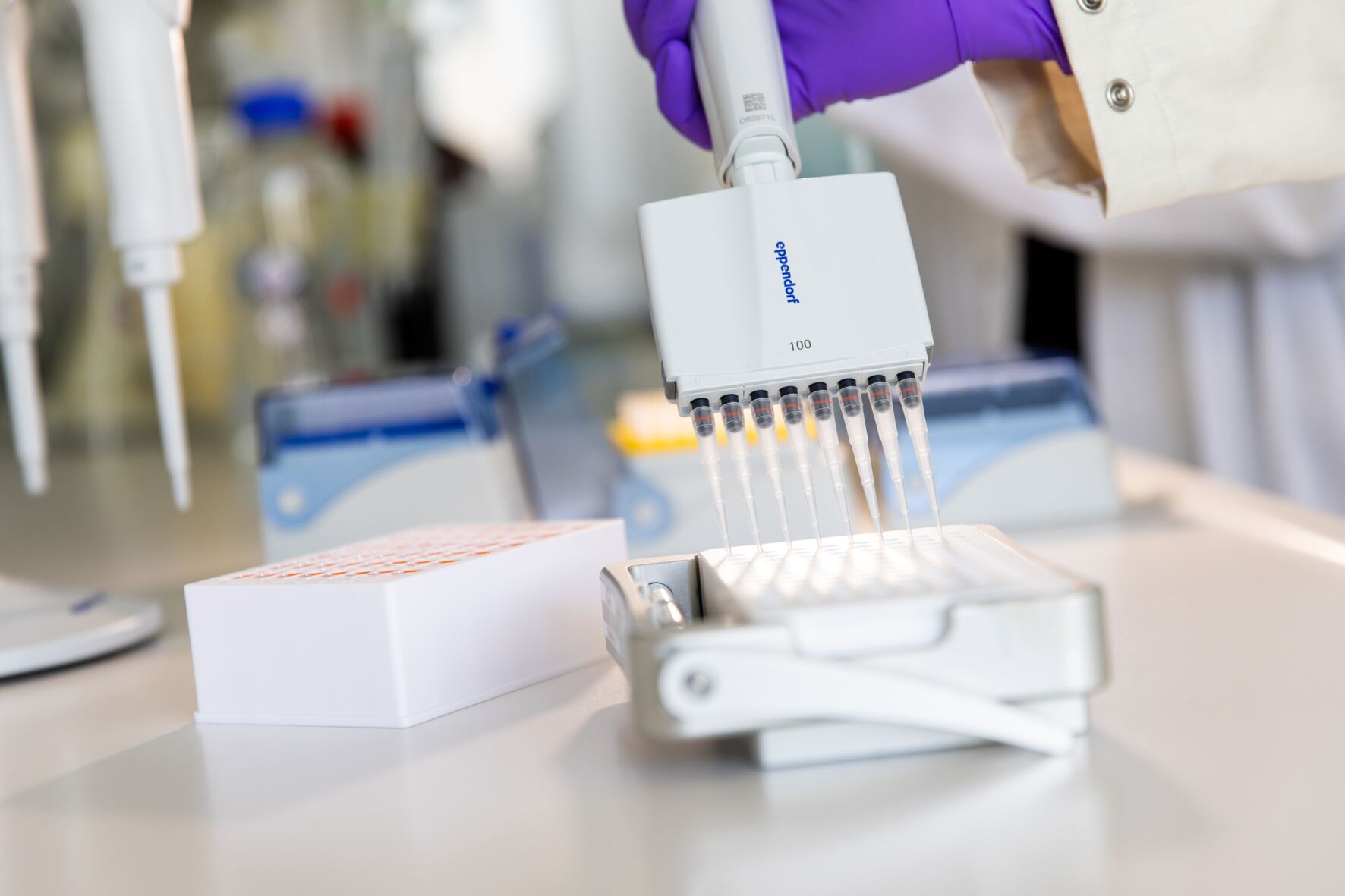It is generally assumed that only the unbound drug can be transported across membranes and become subject to absorption, distribution, metabolism, and excretion (ADME) processes. Hence, plasma protein binding is an important parameter for understanding the pharmacokinetic behavior of a drug, as well as its pharmacological/toxicological effects and estimation of the respective therapeutic window. We determine the binding of drug candidates in plasma from humans or animal species and/or using in vitro assay media by equilibrium dialysis. In addition, the fraction of unbound drug in tissue homogenates, such as brain or tumor, can be evaluated. Two assay systems—RED and HT-dialysis—are available. Additional parameters, such as compound stability in plasma, non-specific binding to device components (recovery), and equilibrium formation, can be included in the high-throughput, partially automated assay.
The concentration ratio of drugs in whole blood and plasma provides an indication of drug binding to erythrocytes. This becomes important when plasma clearances are compared directly with organ blood flow rates, such as in the liver, to obtain the extraction ratio of organ clearance. Our whole blood distribution assay is designed to determine the blood-to-plasma ratio of drug candidates in various animal species (mouse, rat, dog, mini pig, monkey) and humans. Data can be used, for instance, to scale from in vitro to in vivo clearances and thus allows for an estimation of the hepatic first-pass extraction from a plasma clearance.
Both in vitro distribution studies are conducted with unlabeled small molecules using liquid-chromatography tandem mass spectrometry for bioanalysis.
